TIG Welders Job Outlook
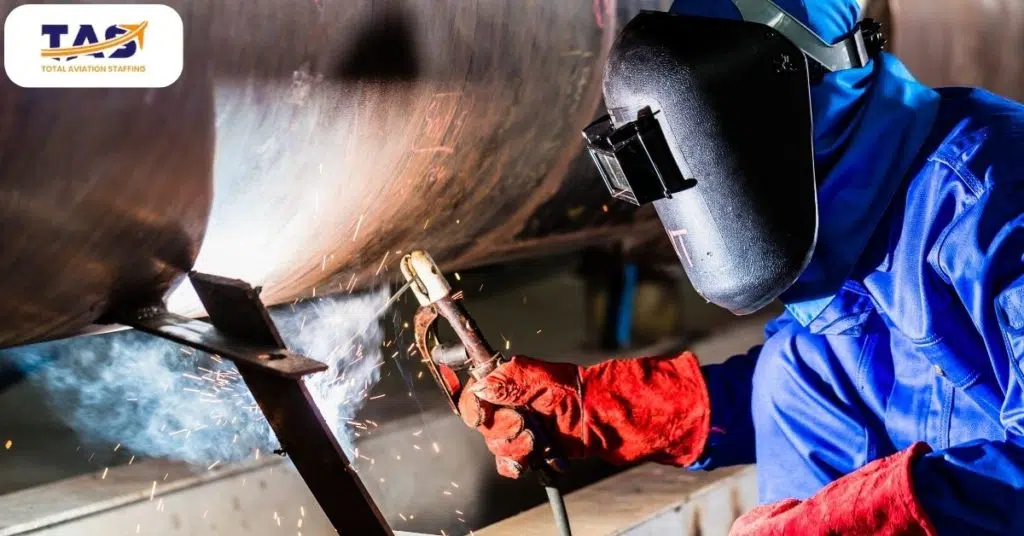
In the dynamic world of aviation, where safety and precision reign supreme, a remarkable group of professionals stands at the forefront – TIG welders. With their skillful hands and unyielding dedication, these artisans of the aerospace realm play a pivotal role in crafting the future of flight.
As aircraft technology hurtles forward, the demand for their expertise is surging, painting an incredibly promising job landscape. In this blog, we dive into the heart of TIG welding’s job outlook in aviation, exploring the challenges, rewards, and an array of exciting opportunities that await those ready to embrace this soaring career. So buckle up as we embark on a journey through the skies of TIG welders’ prospects!
The Crucial Role of TIG Welders in Aviation Maintenance and Repair
TIG Welders are crucial for aviation maintenance, employing precise welding to enhance aircraft safety and performance. Their skillful techniques play a pivotal role in ensuring the integrity of aircraft through effective repair.
Listed below are several of their primary duties:
Welding vital engine components, maintaining structural integrity and safety.
Restoring dimensional accuracy with benching, peening, and manual restoration techniques.
Applying advanced welding methods like GTAW for intricate and critical aircraft parts.
Collaborating with engineers to ensure welds meet stringent quality and performance standards.
Using specialized tools and equipment to perform intricate and high-quality welds.
Here are a few ways they make an impact in the field of aviation:
Ensuring the reliability of aircraft engines and components for safe flights.
Enhancing fuel efficiency and overall aircraft performance through precise welding.
Contributing to the overall safety of aviation personnel and passengers.
As a TIG Welder, you’ll be the aviation guardian who turns metal into marvels, ensuring every flight soars with safety and precision. Ready to spark a fiery career that keeps the skies flawlessly welded? Embrace the fusion of art and engineering – your journey to becoming an airborne artisan starts here!
.webp)
Growing Demand for Skilled TIG Welders in the Aviation Industry
With advancing aviation technology and expanding fleets, the need for proficient TIG welders has increased, ensuring both safety and innovation in the industry.
Below are several factors contributing to their rising demand:
Complex Materials: Advanced alloys require expert TIG welding for durability and performance.
Precision Engineering: As aircraft designs become intricate, precise welds are crucial for structural integrity.
Safety Standards: Stricter safety regulations necessitate flawless welds to maintain airworthiness.
Component Diversity: Varied aircraft components demand specialized TIG welding expertise.
Rapid Innovations: Expanding fleets require welders to adapt to evolving aircraft technologies.
So, if you’re a welder with a passion for precision, a knack for innovation, and a love for taking flight without leaving the ground, the world of aviation TIG welding is calling. Buckle up your skills, ignite your ambition, and join the soaring league of welders who turn metal into masterpieces, propelling aviation into a future where safety and innovation share the same sky. Your next destination? The limitless opportunities of the welding horizon. Get ready to weld your legacy in the ever-evolving tapestry of aviation excellence!
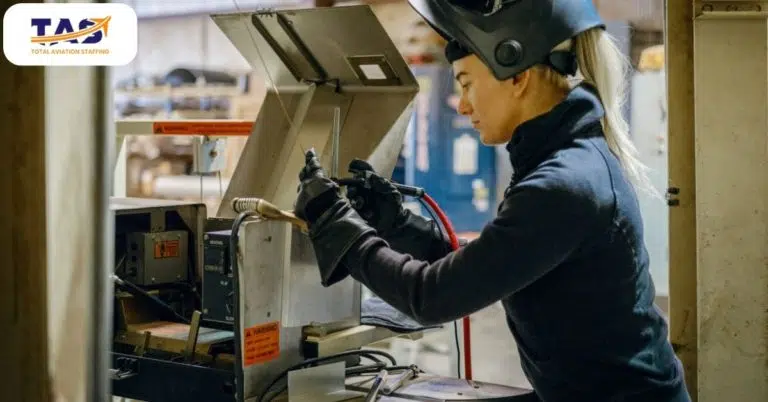
A Closer Lok at TIG Welding Techniques in Aircraft Component Repair
In aviation, TIG welding plays a crucial role, skillfully mending and upholding essential aircraft components with unparalleled precision. It’s the artisanal touch that keeps flight in flawless formation.
Presented below are a few of the welding methods they employ:
Precision Welds: TIG’s fine arc suits delicate, critical part repairs without compromising structural integrity.
Heat Control: Controlled heat input prevents material distortion in sensitive components.
Fusion Welding: TIG ensures seamless fusion between base metals, vital for load-bearing structures.
Inconel Welding: TIG handles Inconel alloys, crucial for high-temperature engine parts.
Aerospace Alloys: Expertise in welding aerospace-specific alloys like titanium for durability and safety.
Multi-Pass Welding: Layered welding guarantees uniform strength in complex components.
Below is the arena where their techniques find application in the realm of aircraft component maintenance:
Engine Parts: Repairing turbine blades, combustion chambers, and exhaust components for optimal engine performance.
Structural Elements: Welding fuselage and wing components to maintain aircraft structural integrity.
Fuel Systems: Repairing and maintaining fuel tanks and lines to prevent leaks and ensure safety.
In the intricate dance of aviation, TIG welders are the choreographers, meticulously fusing dreams of flight with the steel reality of safety and precision. With sparks as their paintbrush and metal as their canvas, they ensure each aircraft pirouettes through the skies flawlessly.
So, whether it’s engines that roar or wings that embrace the wind, these welders turn maintenance into a masterpiece, reminding us that even the boldest flight begins with a skillful weld. Embark on this high-flying journey, where craftsmanship meets the clouds and innovation knows no bounds. Your welding story is about to take off!
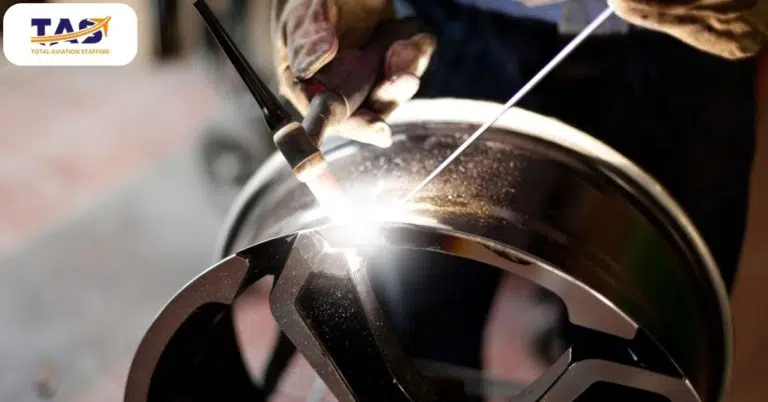
TIG Welding Training and Skill Development: Paving the Way for Aviation Careers
Mastering the art of TIG welding in aviation requires thorough training and ongoing skill enhancement. It’s a journey of continuous learning and precision.
Here are some examples of training and skill development that aspiring TIG welders in aviation might undergo:
Fundamental Welding Techniques: Mastering basic welding skills, safety practices, and equipment operation.
Blueprint Reading: Understanding engineering drawings and specifications for precise welding.
Metallurgy: Learning about different metals, their properties, and how they respond to welding.
Gas Tungsten Arc Welding (GTAW): Developing expertise in TIG welding techniques, settings, and applications.
Pulsed TIG Welding: Gaining proficiency in controlled heat input and reduced distortion techniques.
Weld Inspection and Quality Control: Ensuring weld integrity and meeting aviation standards through inspections.
Aircraft Component Knowledge: Understanding aircraft systems and components that require TIG welding.
Health and Safety Protocols: Adhering to strict safety measures in high-risk aviation environments.
Certification Preparation: Training for industry-recognized welding certifications to validate skills.
Continuous Learning: Staying updated on welding advancements, automation, and emerging technologies.
When you dabble in the metallurgical dance, decode the secrets of flawless fusion, and weave your way through the tapestry of aviation, remember – in the skies of innovation, your sparks of expertise illuminate the path to engineering excellence. Embrace the hum of the arc, and the thrill of mastering precision, and let your welding prowess soar higher, fueled by the flames of continuous learning. Welcome to the welder’s guild of aviation’s finest!
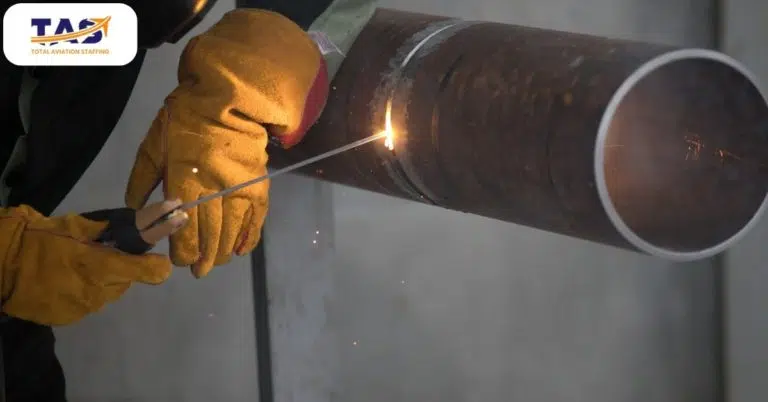
TIG Welding Innovations: Shaping the Future of Aviation Maintenance
Aviation maintenance and repair are undergoing a transformative journey with pioneering TIG welding technologies, reshaping safety and efficiency in the skies. The future soars with innovation, as TIG welding takes flight to create safer and more efficient aerial realms.
Highlighted below is a selection of technological advancements in TIG welding worth exploring:
Automated TIG Welding Systems: Robots for precise, repetitive, and high-quality welds on complex components.
Laser Beam Welding Integration: Combining TIG with laser technology for faster and stronger welds.
In-Process Monitoring: Real-time monitoring for defect detection and immediate adjustments.
Augmented Reality (AR) Guidance: AR-assisted welding, improving accuracy and reducing errors.
Adaptive Control Systems: Adjusting welding parameters dynamically for optimal results on different materials.
Hybrid Welding Techniques: Combining TIG with other methods for versatile and efficient repairs.
Rest assured that these advancements are the compass guiding us toward skies painted with safety and reliability. So let your skills take flight, and join the crew that’s sculpting a future where every journey is a masterpiece of precision and assurance. After all, in the realm of aviation, we’re not just fixing machines – we’re engineering dreams that defy gravity.
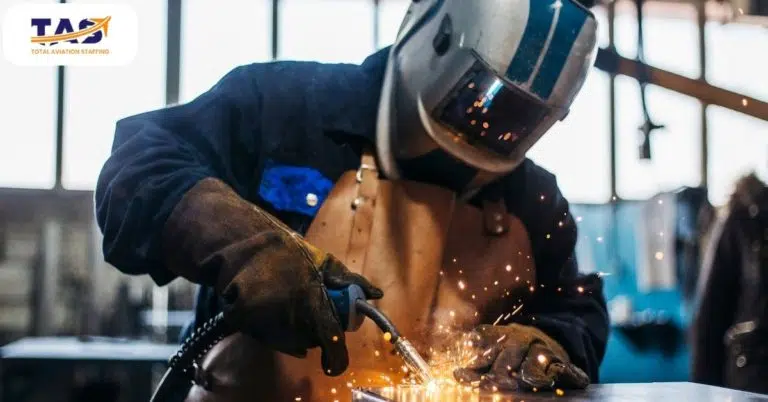
Job Opportunities and Career Paths for TIG Welders in the Aviation Sector
Having these diverse career trajectories and promising prospects, TIG welders in this sector are poised to ride the wave of industry expansion. Their skills seamlessly merge with opportunities, shaping a future rich with potential.
Below are several avenues for job opportunities and career advancement available to TIG welders:
Aircraft Maintenance Technician: Inspect and repair aircraft structures, engines, and components using TIG welding skills.
Welding Specialist: Focus on specialized welding tasks within aviation maintenance, earning expertise and recognition.
Quality Control Inspector: Ensure weld quality and adherence to aviation safety standards for flawless aircraft performance.
Welding Instructor: Share expertise by training aspiring welders and fostering skilled professionals in the industry.
Research and Development: Contribute to innovative welding techniques and equipment, driving aviation technology forward.
Manufacturing: Producing aircraft parts, ensuring quality and precision in assembly.
Aircraft Modification: Modifying aircraft for specific purposes, requiring specialized welding skills.
Quality Control: Ensuring weld integrity through inspection and quality assurance roles.
Whether you’re sculpting the skies through precision welds or igniting sparks of innovation as an aviation welder, your journey is a symphony of opportunities. With a welder’s torch in hand and a heart set on the horizon, you’re not just forging metal – you’re shaping the future of flight. Embrace the dynamic fusion of expertise and ambition, and let your career soar among the clouds of endless possibilities!
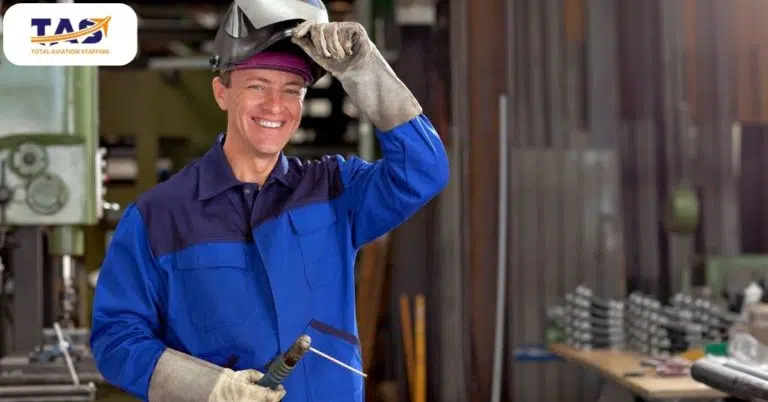
Challenges and Rewards of Being a TIG Welder in Aviation
Embarking on a TIG welding career in aviation presents a path filled with challenges and rewards, sculpting a journey that’s both dynamic and fulfilling. It’s a voyage where each weld holds the promise of innovation, forging a career that soars through the skies of accomplishment.
Listed below are a few hurdles they face:
Precision Demands: Ensuring impeccable welds on intricate aircraft components requires exceptional skill.
Safety Priority: Adhering to strict safety protocols due to aviation’s high-risk environment.
Continuous Learning: Keeping pace with evolving welding techniques and aircraft technologies.
Stringent Standards: Meeting rigorous industry regulations for airworthiness and quality assurance.
Work Environment: Working in confined spaces and varying conditions, demanding adaptability and resilience.
High Responsibility: Impact on flight safety demands flawless welds and thorough inspections.
Despite encountering challenges, they also reap significant rewards, encompassing:
Critical Role: Ensuring aircraft safety and reliability through expert welding contributions.
High Demand: Growing aviation industry creates job stability and diverse career opportunities.
Innovation: Contributing to cutting-edge welding methods and advancing aviation technology.
Skill Mastery: Achieving proficiency in TIG welding, fostering personal and professional growth.
Pride in Contribution: Being part of a team that enables safe and efficient air travel.
Career Versatility: Opportunities in various aviation roles and industries.
Navigating the intricate skies of TIG welding challenges within aviation unlocks a treasure trove of fulfilling rewards, turning each hurdle into a stepping stone toward an awe-inspiring career constellation. So, weld your ambitions with resilience, and let your journey sparkle with the satisfaction of crafting aviation’s destiny, one precision weld at a time.
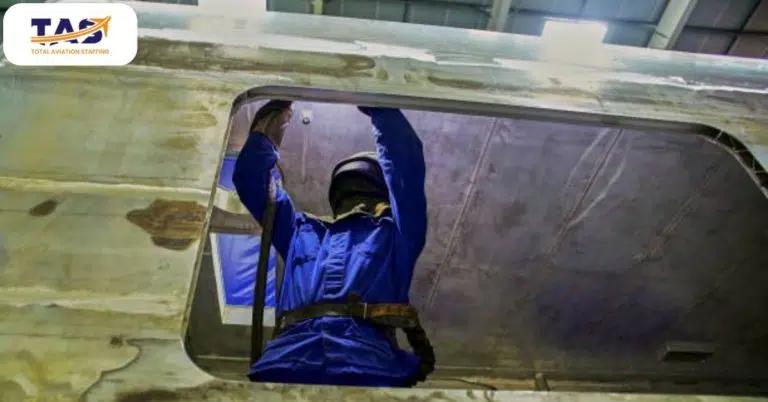
Advice for Aspiring TIG Welders: Navigating the Path to a Successful Aviation Career
For those aspiring to excel as TIG welders in aviation, success takes flight through strategic steps and unwavering dedication. Chart your course with precision, and watch your career ascend to new heights among the clouds of achievement.
Here are some tips for aspiring TIG welders:
Solid Foundation: Obtain a high school diploma or GED as the first step towards your journey.
Formal Training: Enroll in reputable welding programs to gain theoretical knowledge and hands-on experience.
Certifications: Acquire industry-recognized certifications like AWS to enhance credibility and employability.
Apprenticeships: Seek apprenticeships or entry-level roles for practical exposure and skill refinement.
Aviation Knowledge: Familiarize yourself with aircraft components and systems that require TIG welding.
Safety Prioritized: Adhere strictly to safety protocols in the high-risk aviation environment.
Continuous Learning: Stay updated with advanced TIG welding techniques and emerging aviation technologies.
Attention to Detail: Develop a keen eye for precision and meticulous workmanship.
Networking: Connect with professionals in aviation and welding for guidance and opportunities.
Passion and Dedication: Approach the field with enthusiasm, dedication, and a drive for excellence.
Every spark you ignite is a step closer to mastering the skies. With a foundation of knowledge as solid as the metal you weld, and a passion that soars higher than any aircraft, you’re destined to weld your story into the very fabric of aviation’s progress. So, weld your dreams, shape your ambitions, and let your journey in TIG welding take flight – where the sky’s not the limit, it’s just the beginning of your soaring legacy.
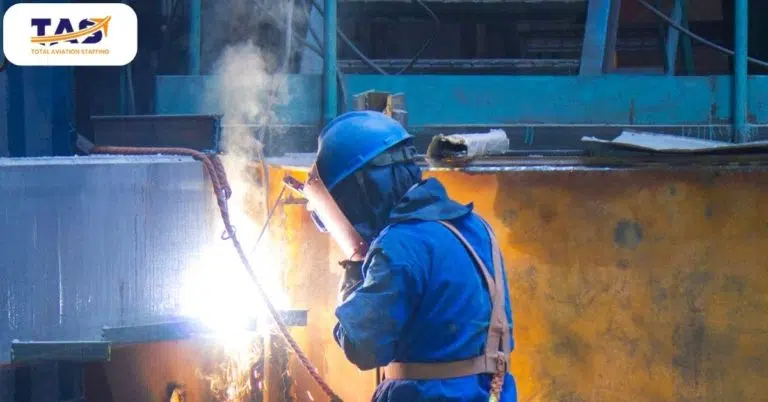
Bringing It All Together
From wielding the torch to welding dreams, TIG welders in aviation are more than just masters of metal—they’re architects of airborne excellence. As aviation takes off to new horizons, these skilled artisans are the navigators of intricate welds and innovative solutions.
So if you’re a job seeker ready to join the ranks of these welding wizards, prepare to ignite your career and shape the future of flight. Buckle up, because in the world of aviation, TIG welders are the stars that light up both the skies and their destinies. So polish those goggles, grab that welding rod, and get ready to soar in a job outlook that’s hotter than your torch!
Join the League of welding wizards and craft your future in the high-flying world of TIG welding. Total Aviation Staffing connects you with top aerospace and aviation opportunities across the U.S. Elevate your journey today – from polishing resumes to landing dream jobs. Your destiny is in your hands. Ignite your passion, weld your dreams, and take flight with Total Aviation Staffing. Let’s shape the skies together!
